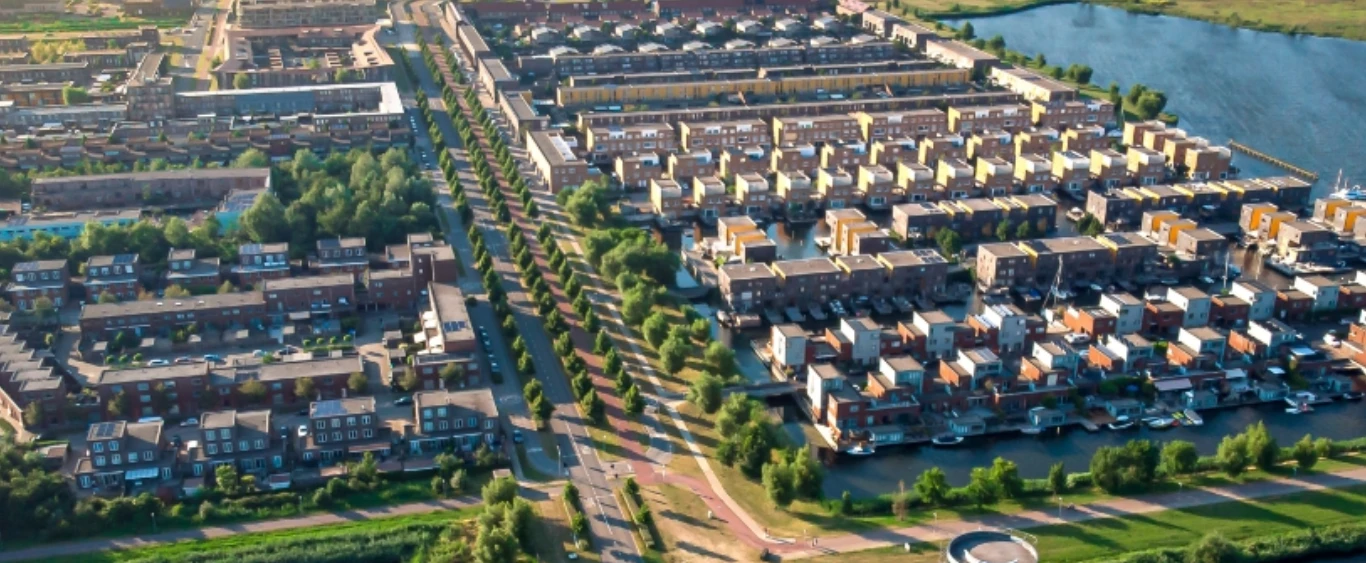Air pollution is quickly becoming one of the foremost hazards to society. With every breath, we are damaging our health and reducing our quality of life – outside, at work and even at home. So how to reduce air pollution at home? Gated communities may be the solution to this problem since they serve to protect the environment as well as the residents living in the area.
Some of the ways gated communities help reduce air pollution are through less traffic, waste management, architecture design, trees and other plantations. This leads to a healthier and safer environment for sustainable living. Sustainable developments attempt to clarify the balance between the economic growths and protecting the environment from pollution. Gated communities have managed to achieve this balance through the measures and policies put in place to provide a safe environment for the people.
This article discusses the various ways in which gated communities help to reduce air pollution.
Peaceful Serene Environment
The hallmark of a gated community is having your own personal space away from the bustle of the city. A serene living environment is essential for your health both psychologically and physically. Most of the gated communities have peaceful and lush greenery landscapes with trees and other plantations. We all know the importance of having trees in our environment as it brings rain and also helps to prevent soil erosion. The walking tracks in gated communities are adorned with bright flowers and other vibrant plants that provide a visually tranquil environment for the usage of residents who live in the community.
A study conducted by NASA researchers shows that plants can help reduce air pollution at home and throughout the surrounding area. Some of the chemical emissions that can result in air pollution indoors include alcohols, acetone, xylene, ammonia, and chloroform. Most of these chemicals are found in cleaning products, stains, floor coverings, carpeting, and adhesives. Plants that are stationed inside the houses in gated communities freshen the air by filtering pollutants and emitting oxygen.
Less Traffic
The secured perimeter of the gated community only allows specific vehicles into the area. This helps to reduce pollution and congestion in the gated communities because of low carbon emission. The measures put in place free up road capacity and the frequency of vehicles driving in or out of the compound. The fact that roads are tarmacked helps to reduce air pollution that would arise from dust particles that fill up the air.
Dusty roads can pose a significant risk to the residents and the surrounding environment. The jogging or walking tracks are designed in the same manner to provide a peaceful environment for the residents in gated communities.
Other policies that allow driving economically is that people who own cars in these areas obey speed limits by accelerating gently. This uses less petrol which produces less pollution. Most of the residents have a working routine that makes them leave earlier during the day and come back home later in the evenings. It helps reduce pollution and contributes to less congestion.
Architecture Design
Specification of sealants and paints that have next to zero VOC content is useful in minimizing the air pollutants that we design and build for our indoor air quality environments. Most of these building are painted with brands that have no volatile organic compounds.
Not only is it better for the environment but also better for human health. Architecture in the gated communities plays a significant role in selecting the right material for cabinets or floors. Choosing the appropriate building material lowers air pollutants that may compromise the health and well-being of the residents.
Buildings need to be designed with materials that are carefully considered for durability and do not poses harmful materials to the people and the environment. Right-sizing of structures in the gated communities helps to reduce the embodied carbon footprint in the building. Most of the communities that have been designed by architects are often clustered around jobs, transit, and amenities. These pedestrian-oriented and walkable neighbourhoods will help reduce overdependence on fossil fuel transportation.
Gated communities in the cities are usually sited in areas that have captured precipitation so that it can meet the projected water use. One of the world’s greatest concern is the scarcity of potable water and climate change plays a significant role in our unsustainable patterns of water use.
Facility Layouts
The buildings and process units are usually arranged in a manner that allows the most economical flow of both people and materials. The layout of gated communities is often planned with the idea of allowing future expansion. Dangerous processes that can cause air pollution in the area are located at a safe distance from other buildings. The composite or litter bins are placed a few meters away from the house as they wait to be transported to the dump site.
The gaming courts, gardens, playgrounds and other places meant for recreational activities are located within the gated community to reduce chances of air pollution. Closed litter bins are placed in every location to avoid filthy smell that can result in pollution.
Solid Waste Management
The management of solid waste in the urban areas involves the collection, segregation, transportation, and recycling of wastes that are collected from residential, corporate, industrial and commercial developments. Solid waste management in the gated communities is essential in preventing pollution around the nearby areas. It often arises out of rubbish heaps that poses a health hazard. These wastes include wet waste, dry waste, and domestic wastes.
Utilization of Solar Energy
Solar panels are used as an alternative means of capturing energy from the sun. This energy is then converted into light energy, fuel energy, and heat energy. Renewable energy that is community owned significantly reduces carbon footprint and educates the people about creating a sustainable low carbon future. This helps to aim towards a sustainable development by avoiding other means of energy that uses fossil fuels.
The reason for the existence of solar energy is due to its renewability. It does not deplete the earth’s natural resources and does not emit harmful gases into the air. The existence of solar energy is because it can be connected easily to existing electrical stands, it is easy to distribute, affordable and dependable.
Recommended blogs







